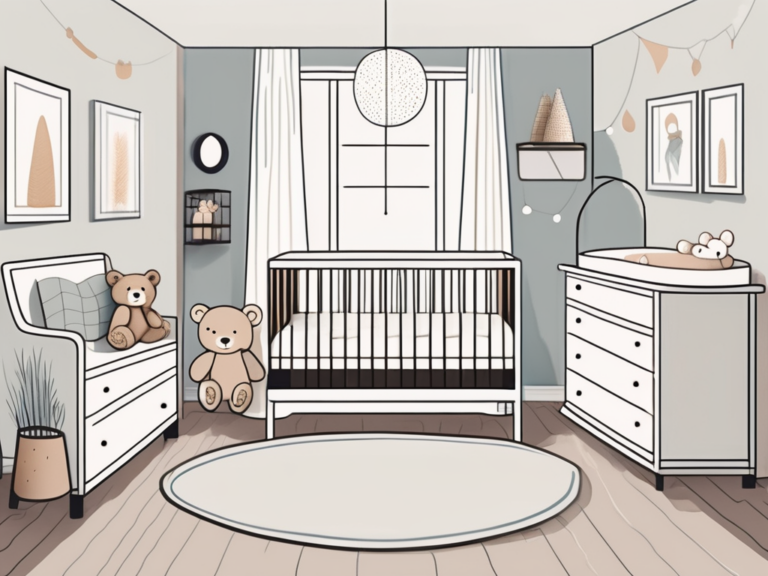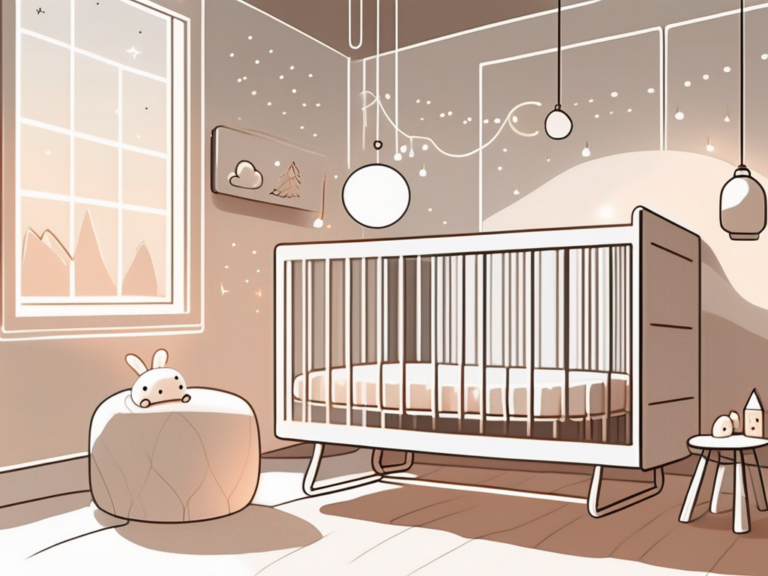Tips for Getting Your 1-Year-Old to Sleep Through the Night
One of the biggest challenges for parents of 1-year-olds is getting them to sleep through the night. Many parents struggle with establishing a consistent sleep routine and dealing with night waking and nightmares. In this article, we will provide you with valuable tips and strategies to help your little one get the sleep they need for optimal growth and development.
Understanding Your 1-Year-Old’s Sleep Pattern
Sleep patterns and needs vary among different age groups, and 1-year-olds are no exception. At this age, most children need around 11-14 hours of sleep per day, including naps. However, every child is unique, so it’s essential to pay attention to your little one’s individual sleep cues.
One-year-olds typically require two naps during the day, one in the morning and one in the afternoon. These naps help them recharge and maintain a positive mood throughout the day. However, as your child gets closer to 18 months, they may start to transition to one nap per day.
It’s fascinating to observe how your child’s sleep patterns evolve as they grow. During the first few months of life, newborns sleep for most of the day, gradually reducing the total sleep time as they reach their first birthday. This reduction in sleep time is accompanied by an increase in the duration of nighttime sleep, as their bodies adjust to a more consolidated sleep schedule.
The Importance of a Consistent Sleep Schedule
Setting up a consistent sleep schedule is crucial for promoting healthy sleep habits. A predictable routine helps your little one anticipate sleep times, making it easier for them to fall asleep and stay asleep throughout the night.
Try to establish fixed wake-up and bedtime routines. Waking up and going to bed at the same time each day helps regulate your child’s internal body clock and promotes restful sleep. Consistency is key, even on weekends or during vacations.
Additionally, incorporating calming activities before bedtime can help signal to your child’s body that it’s time to wind down. Activities such as reading a bedtime story, taking a warm bath, or engaging in a quiet playtime can create a soothing environment that promotes relaxation and prepares your little one for sleep.
Keep in mind that your child’s sleep needs may change as they grow, so be ready to adjust the schedule accordingly. Observe your child’s behavior and adjust nap times and nighttime sleep based on their cues.
Recognizing Sleep Regression
Sleep regression refers to a period when a child’s sleep pattern, which was previously stable, suddenly becomes disrupted. It is common for children around 1 year old to experience sleep regression due to various factors, including growth spurts, teething, or developmental milestones.
Your little one may start having trouble falling asleep, waking up frequently during the night, or resisting bedtime altogether. During sleep regression, it’s important to provide extra comfort and reassurance to your child as they adjust to new sleep patterns.
Understanding the underlying causes of sleep regression can help you navigate this challenging phase. Growth spurts, for example, can lead to increased hunger, causing your child to wake up more frequently. Teething discomfort can also disrupt sleep, making your little one more irritable during the night. By addressing these specific needs, you can help your child feel more comfortable and secure, promoting better sleep.
Establishing a Bedtime Routine for Your Toddler
Creating a bedtime routine helps signal to your little one that it’s time to wind down and prepare for sleep. Consistency is key when establishing this routine, as it helps set expectations and promotes a sense of security and comfort for your child.
The Role of Bath Time and Story Time
A warm bath before bed can help relax your child and prepare them for sleep. It can be a soothing and enjoyable activity that signals the end of the day. After the bath, engage in a calming activity such as reading a bedtime story. This helps your child unwind and shift their focus away from stimulating activities.
Choose books with peaceful and calming themes, avoiding overly exciting or stimulating stories. This part of the routine allows you to bond with your child and create positive associations with bedtime.
The Impact of Music and White Noise
Music and white noise can create a soothing environment that promotes relaxation and sleep. Soft lullabies or gentle white noise can block out external sounds and provide a comforting ambiance for your little one.
Consider incorporating a sound machine or a CD player with calming music into your child’s bedtime routine. Just make sure the volume is low enough to avoid disturbing their sleep.
Now, let’s dive a little deeper into the benefits of bath time in a bedtime routine. Not only does a warm bath help relax your child’s muscles, but it also has a calming effect on their mind. The warm water soothes their senses, making them feel safe and secure. Additionally, the routine of bathing itself can be a comforting ritual for your little one, as they know what to expect and can anticipate the next steps in their bedtime routine.
When it comes to story time, the benefits extend beyond simply winding down. Reading to your child before bed helps develop their language and cognitive skills. It exposes them to new vocabulary and concepts, stimulating their imagination and creativity. Furthermore, the act of cuddling up and listening to your voice creates a sense of closeness and emotional connection, which is essential for your child’s overall well-being.
Creating a Conducive Sleep Environment
The sleep environment plays a significant role in your child’s ability to fall asleep and stay asleep. Creating a calm and comfortable space can help facilitate better sleep quality.
When it comes to creating the perfect sleep environment for your little one, there are a few key factors to consider. One of the most important factors is the room temperature. Temperature can greatly impact sleep quality, so it’s essential to ensure that the room is at the right temperature for your child to sleep soundly.
The Right Room Temperature for Sleep
The ideal room temperature for your little one is around 68-72 degrees Fahrenheit (20-22 degrees Celsius). This range provides a comfortable and cool environment that promotes restful sleep. It’s important to note that every child is different, so you may need to adjust the temperature slightly to find what works best for your little one.
In addition to setting the right room temperature, it’s also crucial to dress your child appropriately for the temperature. Choose breathable pajamas that will keep them comfortable throughout the night. It’s also a good idea to keep their bedding light and breathable to prevent overheating.
Regularly monitoring the room temperature is essential to ensure it remains within the recommended range. You can use a thermometer or a smart home device to keep track of the temperature and make any necessary adjustments.
Choosing the Perfect Night Light
A night light can provide a sense of security and comfort for your child, especially if they are afraid of the dark. When choosing a night light, opt for one that emits a soft, dim glow. Bright lights can interfere with sleep quality and make it harder for your child to fall asleep.
Not only can a night light help your child feel safe and secure, but it can also be beneficial when they wake up during the night. By providing a gentle glow, a night light allows your child to orient themselves in the dark without fully waking up. This can help them fall back asleep more easily and reduce the chances of them becoming fully awake.
When selecting a night light, consider the different options available. Some night lights come with adjustable brightness settings, allowing you to customize the level of light to suit your child’s preferences. You can also find night lights with fun designs or soothing colors that can further enhance the sleep environment.
Nutritional Factors That Affect Sleep
Your child’s diet can significantly impact their sleep quality and patterns. Paying attention to their nutritional intake can help promote better sleep and overall well-being.
The Link Between Diet and Sleep
Certain foods and beverages can interfere with your child’s ability to fall asleep and stay asleep. Avoid giving them caffeine in any form, including chocolate, sodas, or tea, as it is a stimulant that can disrupt sleep.
Additionally, aim to provide a balanced diet with plenty of fruits, vegetables, and whole grains. These foods contain important nutrients that support healthy sleep patterns. For example, fruits like bananas and cherries are rich in melatonin, a hormone that helps regulate sleep-wake cycles. Leafy greens, such as spinach and kale, are packed with magnesium, which can promote relaxation and improve sleep quality. Whole grains, like oats and brown rice, are a good source of complex carbohydrates that can help increase serotonin levels, a neurotransmitter that aids in sleep regulation.
Consult with your pediatrician for specific dietary recommendations for your child. They can provide guidance on portion sizes and suggest other sleep-supporting foods that may benefit your child’s individual needs.
The Effect of Late Night Snacks
While it’s essential to make sure your child isn’t hungry before bed, offering heavy or sugary snacks close to bedtime can lead to discomfort and difficulty falling asleep. This is because these types of snacks can cause a spike in blood sugar levels, which can disrupt sleep. Instead, provide a light and balanced snack if necessary, such as a small piece of fruit or a yogurt cup.
Some fruits, like kiwi, contain high levels of antioxidants and serotonin, which can promote relaxation and improve sleep quality. Yogurt, especially the ones that are low in sugar, can provide a good source of calcium and magnesium, both of which are essential for sleep regulation. Consider adding a sprinkle of nuts or seeds, like almonds or chia seeds, to the yogurt for an extra boost of sleep-supporting nutrients.
Remember, establishing a consistent bedtime routine that includes a healthy dinner and a suitable snack can contribute to better sleep for your child. By being mindful of their nutritional intake, you can help create an environment that supports their sleep needs and promotes their overall well-being.
Dealing with Night Waking and Nightmares
Waking up during the night is common for toddlers. Understanding how to handle night waking and nightmares can help you respond appropriately and minimize disruptions to your child’s sleep.
But let’s dive a little deeper into the world of night waking and nightmares, shall we?
Comforting Your Child After a Nightmare
Nightmares can be frightening for young children. When your little one wakes up upset from a nightmare, offer them comfort and reassurance. Stay calm and soothe them with gentle words and hugs.
But did you know that nightmares can sometimes be a reflection of your child’s emotions and experiences during the day? It’s true! Nightmares can often be triggered by stress, anxiety, or even a change in routine. So, it’s important to create a safe and nurturing environment during the day as well, to help prevent those nighttime frights.
You can also use a comfort object, such as a favorite stuffed animal or blanket, to provide additional comfort. Make sure their sleep environment is safe and free of anything that may contribute to their fears.
Techniques to Encourage Self-Soothing
Encouraging your child to learn self-soothing techniques can help them fall back asleep independently when they wake up during the night. This skill is essential for better sleep quality and reducing night waking.
But how exactly can you teach your child to self-soothe? Well, one effective method is the gradual withdrawal technique. This involves gradually reducing your presence during bedtime and night waking. By providing verbal reassurance and briefly checking on them, you can gradually allow them to fall back asleep on their own.
It’s important to remember that teaching self-soothing techniques takes time and patience. Every child is different, and what works for one may not work for another. So, be flexible and open to trying different strategies until you find what works best for your little one.
When to Seek Professional Help
In some cases, sleep difficulties may require professional intervention. It’s important to recognize the signs that indicate your child may need professional help to address their sleep issues.
Identifying Sleep Disorders in Toddlers
If your child consistently has trouble falling asleep, staying asleep, or experiences excessive daytime sleepiness, it may be a sign of a sleep disorder. Other symptoms include loud or frequent snoring, restless sleep, or significant difficulty waking up in the morning.
If you suspect a sleep disorder, consult with your pediatrician, who may refer you to a pediatric sleep specialist for further evaluation and guidance.
The Role of a Pediatric Sleep Consultant
A pediatric sleep consultant is a trained professional who can provide personalized guidance and strategies to help your child develop healthy sleep habits. They work with you to create a tailored sleep plan and provide ongoing support throughout the process.
Consider seeking the help of a sleep consultant if you have tried various strategies without success or if your child’s sleep difficulties are significantly affecting their overall well-being and quality of life.
A good night’s sleep is crucial for your child’s growth, development, and overall well-being. By understanding their sleep pattern, establishing a consistent routine, creating a conducive sleep environment, and addressing any potential nutritional or sleep issues, you can help your 1-year-old develop healthy sleep habits that will benefit them for years to come.
Furthermore, it’s important to note that sleep disorders in toddlers can have a significant impact on their cognitive development. Studies have shown that inadequate sleep can lead to difficulties in attention, memory, and problem-solving skills. This is why it’s crucial to address any sleep issues your child may be experiencing.
Additionally, sleep disorders can also affect your child’s mood and behavior. Lack of sleep can make them irritable, cranky, and prone to tantrums. It can also affect their ability to regulate their emotions, leading to increased anxiety or even depression. By seeking professional help, you can ensure that your child receives the necessary support to improve their sleep and overall well-being.






